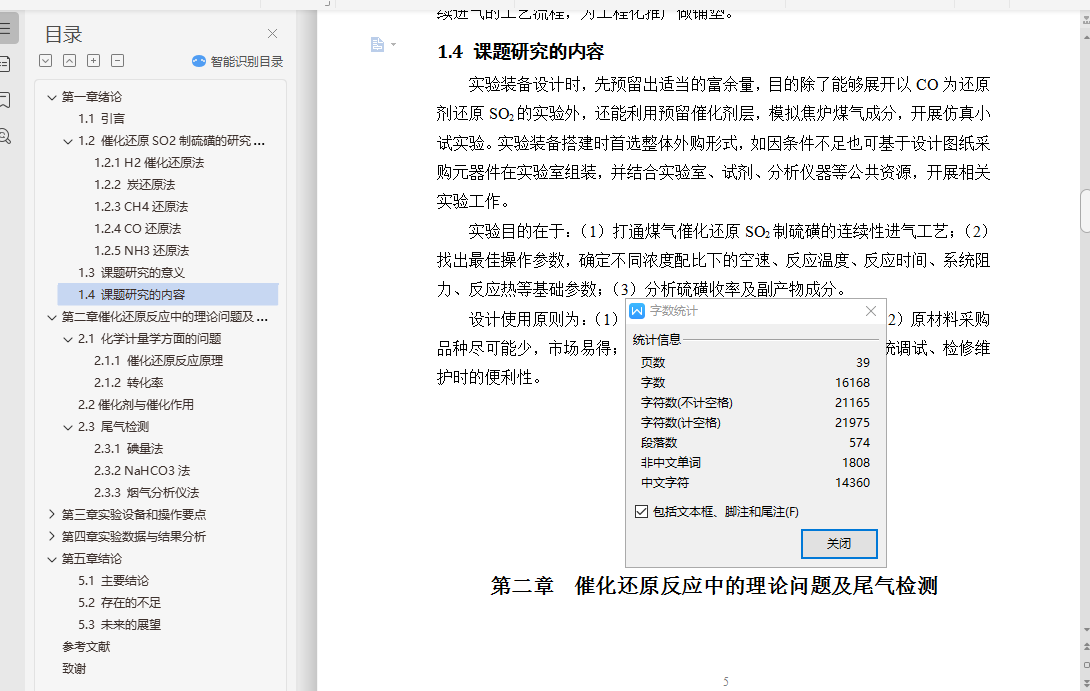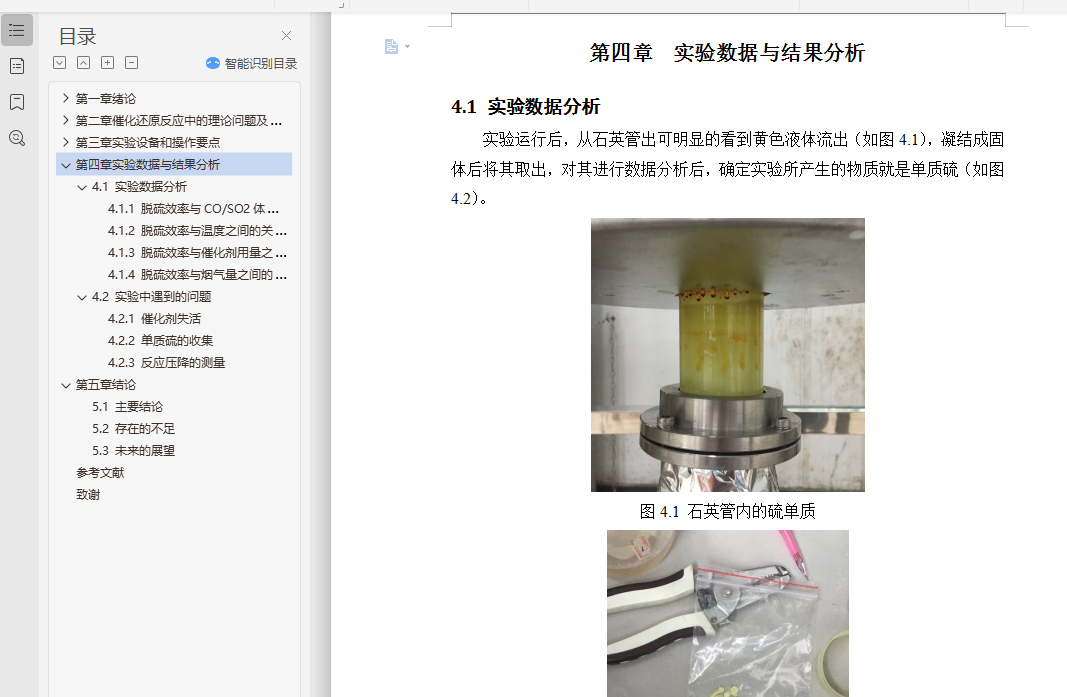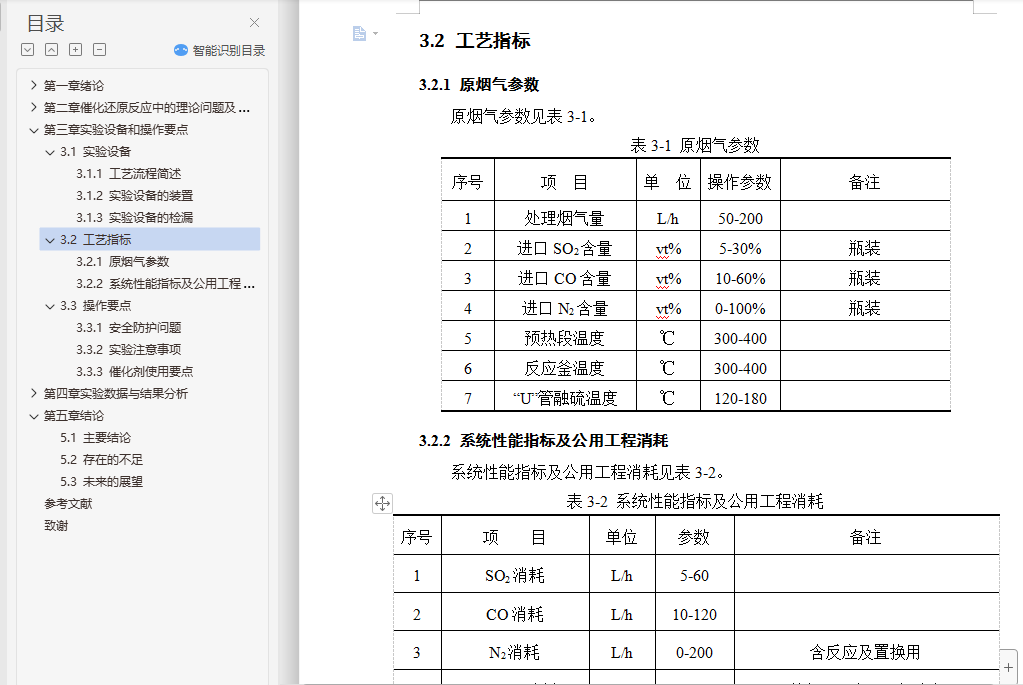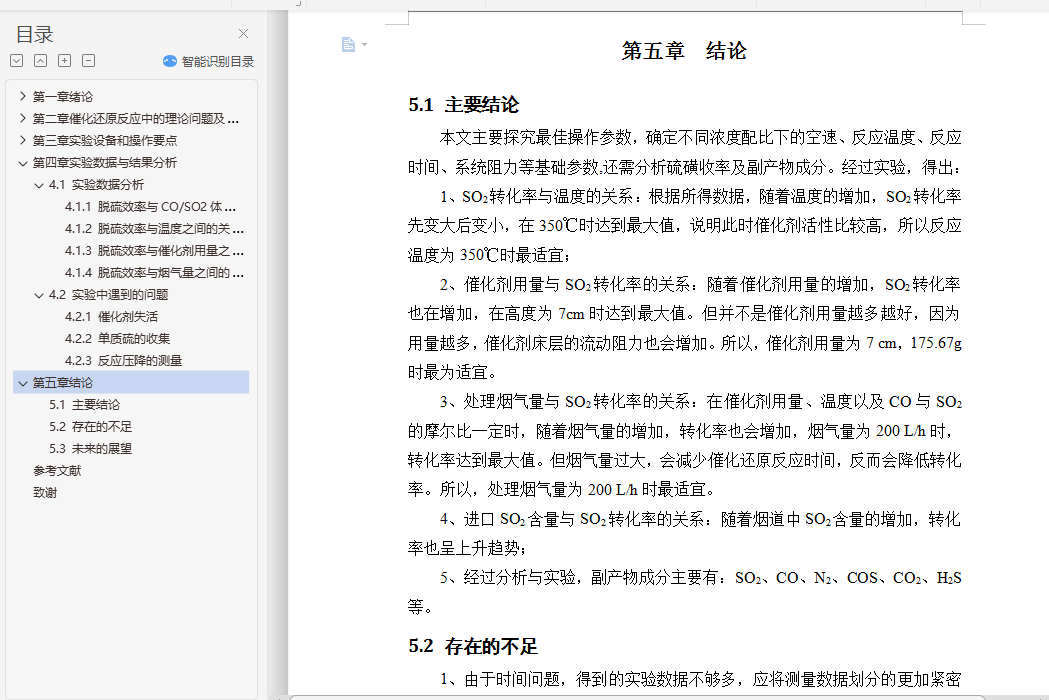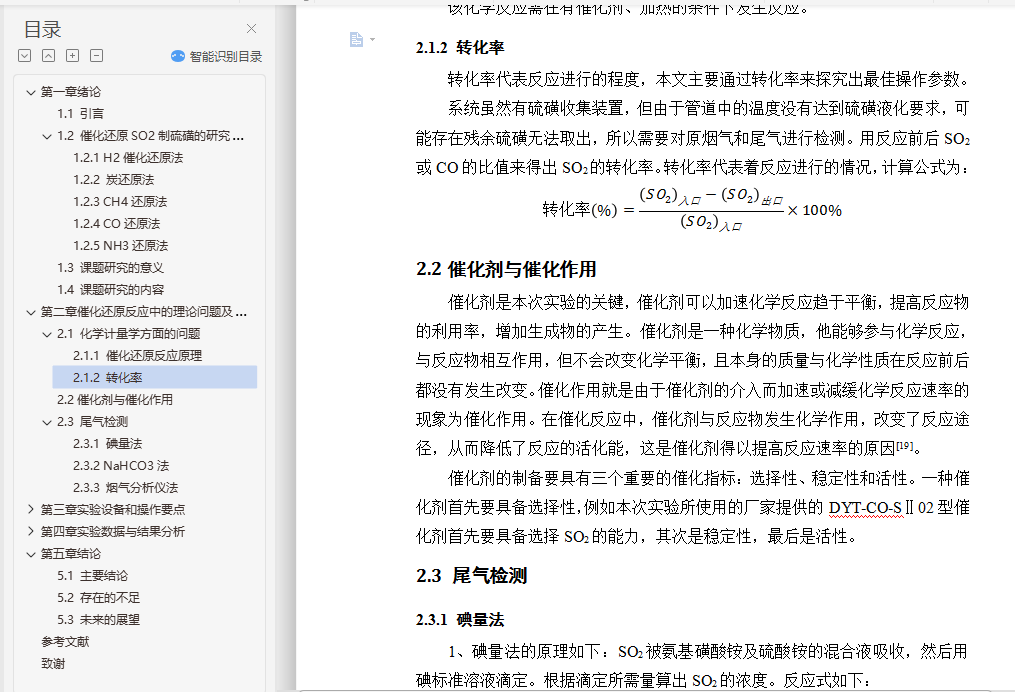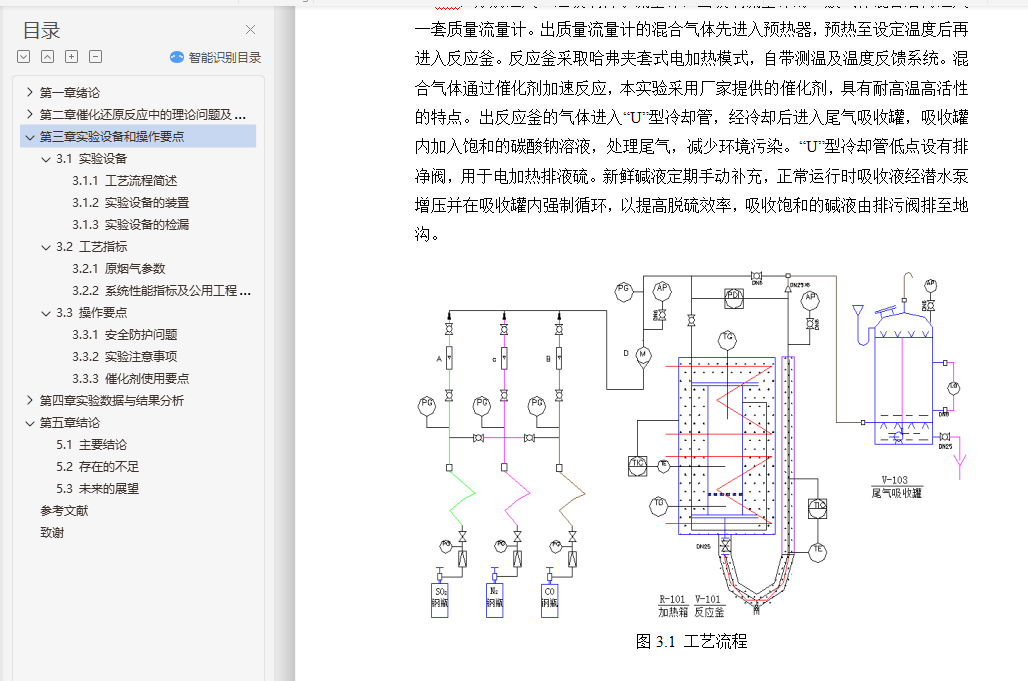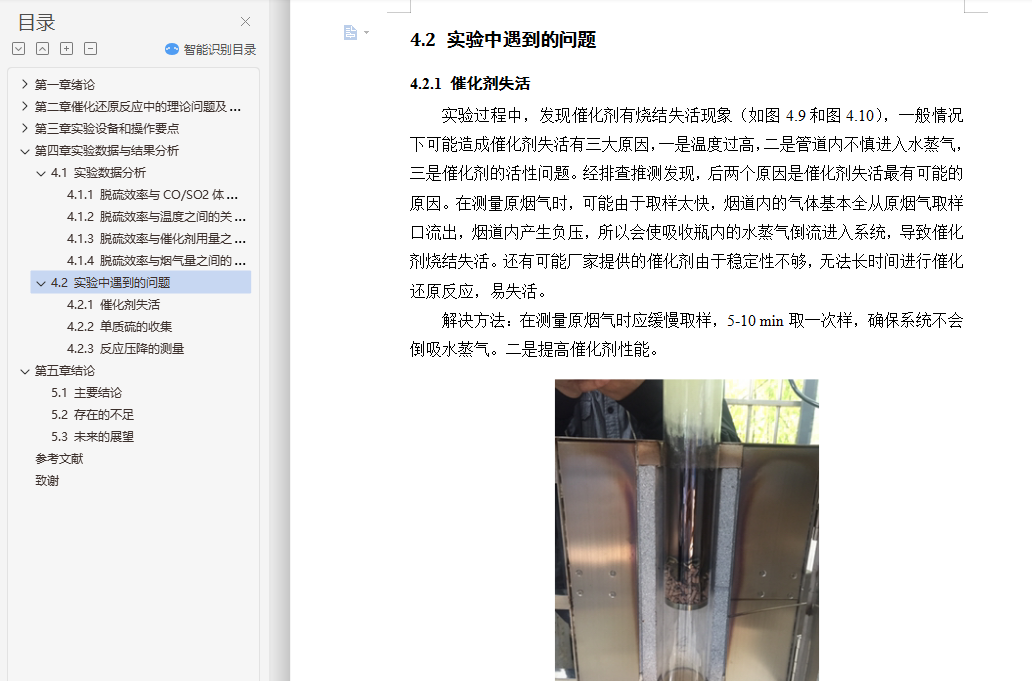气相催化还原二氧化硫影响因素实验研究毕业论文
摘 要
SO2是大气中主要的污染物之一,有毒且具有刺激性气味,主要来源于煤和石油的燃烧。电厂中SO2的排放量很高,目前湿法脱硫的方法仍有弊端。对比之下,直接催化还原法具有很大优点,将SO2催化还原成硫单质,既可以减轻污染问题,又能够解决我国硫单质短缺的情况。
本文采用瓶装SO2、CO及N2作为主反应原料,进行配气,利用催化剂催化提高反应速率,用三种气体的混合气模拟电厂的实际情况,得到硫单质的产率,并分析产物成分。CO为还原剂的脱硫工业化进展缓慢,主要都集中在非连续式的实验室探究阶段,本次实验旨在打通连续进气的工艺流程,为工程化推广做铺垫。对于硫单质的产率可检测反应前后SO2的浓度,对于SO2的浓度可采用烟气分析仪进行检测,由于本次模拟试验中SO2的浓度过高,可通过通N2进行稀释,让SO2浓度在烟气分析仪测量浓度范围内。
关键词:二氧化硫;一氧化碳;氮气;催化还原;硫
ABSTRACT
Sulphur dioxide is one of the main pollutants in the atmosphere, toxic and pungent, mainly from the burning of coal and oil. Sulfur dioxide emissions from power plants are high, and the current method of wet desulphurization has its drawbacks. By contrast, direct catalytic reduction has great advantages, which can reduce the pollution problem and solve the shortage of sulfur in our country.
This article USES the bottled sulfur dioxide, carbon monoxide and nitrogen gas as the main raw materials, distribution, use of catalyst to improve the reaction rate, three kinds of gas mixture was used to simulate the plant actual situation, get the yield of elemental sulfur, and analyze the product composition. Carbon monoxide as the reducing agent of desulfurization slow progress of industrialization, mainly concentrated in the laboratory of continuous exploration stage, this experiment aims to get through the process of continuous intake, do matting for engineering to promote. For the yield of elemental sulfur detection before and after the reaction of SO2 concentration, the concentration of sulfur dioxide flue gas analyzer can be used for testing, due to the high concentration of sulfur dioxide in the simulating test, can use nitrogen to dilute, let SO2 concentration in flue gas analyzer to measure the concentration range.
Key words: Sulfur dioxide; Carbon monoxide; Nitrogen; Catalytic reduction; sulfur
目 录
